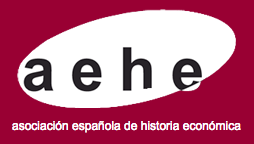Schools, teachers, and territories. State capacities and human capital in Uruguay, 1877-1910
DOI:
https://doi.org/10.33231/j.ihe.2022.12.001Keywords:
Public education, School legislation, Uruguay, First Globalization, N36, N46, I25, I28Abstract
This article analyzes the early Uruguayan school expansion in Latin America during the First Globalization.
With the school reform of 1877, the Uruguayan school system became highly centralized with a strong state
role in decision-making and the distribution of public funds. Information in the memories of «Dirección de
Instrucción Pública», shows the significant growth of the school budget, concentrated in salaries and early
shaped public education a highly feminized labor sector. Unlike other historical experiences, the public-school
supply was concentrated in less prosperous territories while the demand for education in Uruguay was greater
in economics richer regions. Another inequality was found in the type of school establishment. Rural schools
were the most important in public enrollment, but only allowed to lower levels of education, resulting in relevant
educational inequalities between Montevideo and the rest of territories.
Downloads
Downloads
Published
How to Cite
Issue
Section
License
Copyright (c) 2023 Camilo Martínez Rodríguez

This work is licensed under a Creative Commons Attribution-NonCommercial-NoDerivatives 4.0 International License.
Aquellos autores/as que tengan publicaciones con esta revista, aceptan los términos siguientes
- Los autores/as conservarán sus derechos de autor y garantizarán a la revista el derecho de primera publicación de su obra, el cuál estará simultáneamente sujeto a la Licencia de reconocimiento de Creative Commons Reconocimiento-No comercial-Sin obra derivada 4.0 Internacional que permite a terceros compartir la obra siempre que se indique su autor y su primera publicación esta revista, y no permite hacer uso comercial de la misma ni tampoco obras derivadas.
- Los autores/as podrán adoptar otros acuerdos de licencia no exclusiva de distribución de la versión de la obra publicada (p. ej.: depositarla en un archivo telemático institucional o publicarla en un volumen monográfico) siempre que se indique la publicación inicial en esta revista.
Plagio y fraude científico
La publicación de un trabajo que atente contra los derechos de propiedad intelectual será responsabilidad de los autores/as, que serán los que asuman los conflictos que pudieran tener lugar por razones de derechos de autor. Los conflictos más importantes pueden darse por la comisión de plagios y fraudes científicos.
Se entiende por plagio:
- Presentar el trabajo ajeno como propio.
- Adoptar palabras o ideas de otros autores sin el debido reconocimiento.
- No emplear las comillas u otro formato distintivo en una cita literal.
- Dar información incorrecta sobre la verdadera fuente de una cita.
- El parafraseo de una fuente sin mencionar la fuente.
- El parafraseo abusivo, incluso si se menciona la fuente.
Las prácticas constitutivas de fraude científico son las siguientes:
- Fabricación, falsificación u omisión de datos y plagio.
- Publicación duplicada.
- Conflictos de autoría.





